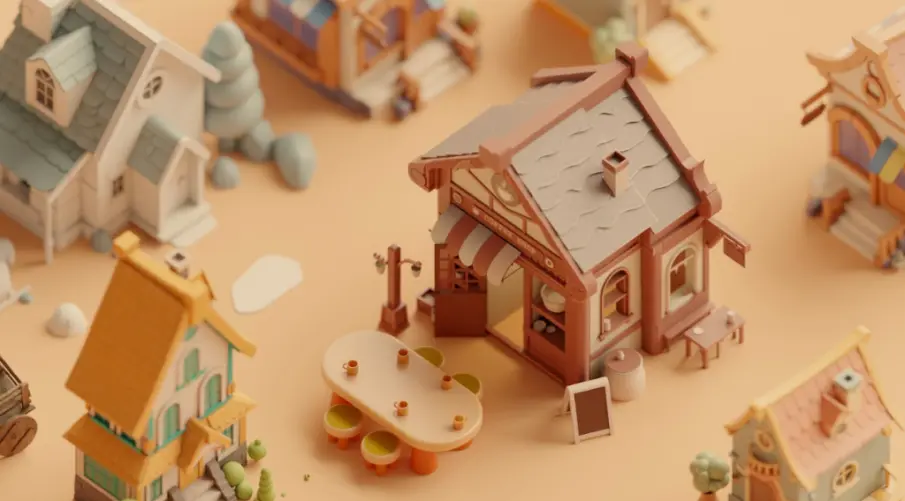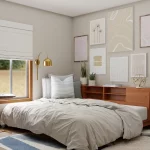Stuff You Can Ignore (and Stuff You Can’t) When House Hunting
Buying a home is exciting, but let’s be honest; it can also be a bit overwhelming. You walk into a showing, and your brain starts playing tricks on you: Is that wallpaper a deal-breaker? The carpet is… bright orange should I run? With so much to take in, it’s tough to know what matters long-term and what’s just cosmetic fluff. This guide is here to help you sort through the chaos. Let’s talk about the stuff you can ignore and the stuff you absolutely shouldn’t when you're house hunting.

Wallpaper, Paint, and Funky Curtains? Don’t Sweat It
Bold colors or wild décor choices can feel jarring at first. But guess what? Those things are cheap and easy to fix. Wallpaper can come down. Paint can be changed. And those wild zebra-print curtains? Yeah, those are leaving with the current owners.
You’re not buying someone’s style; you’re buying bones, layout, and location. Focus on the structure and layout instead of the window treatments.
Same goes for outdated light fixtures. That weird chandelier in the dining room might scream 1983, but replacing it with something modern can be done in an afternoon (and usually under $200).
What’s Underneath Matters More Than What’s On Top
This is where you’ve got to put on your practical hat. Flooring, for instance, while it might look like a disaster, replacing old carpet or refinishing hardwood is doable. But if the subfloor is warped or the foundation has cracks, that’s a much bigger conversation.
Things to check that could mean serious repair work:
- Uneven floors or noticeable sloping
- Large cracks in basement walls or ceilings
- Doors that don’t close properly (could signal shifting foundation)
These aren’t automatic deal-breakers, but they do warrant a professional inspection and, potentially, a renegotiation on price.
Don’t Let Smell Be the Sole Judge
A musty or pet-heavy smell might be a turn-off, but it doesn’t necessarily mean there’s a major issue. Sometimes, it's just a matter of needing a deep clean or a new carpet.
But here’s the key: follow your nose, but verify. If there’s a persistent damp smell, that could mean a water issue in the basement or attic. Always ask questions, and if you’re unsure, have a home inspector take a closer look.
On the flip side, overly strong air fresheners can be a red flag too; some sellers try to cover up moldy smells or smoke damage with plug-ins. If a house smells like a Bath & Body Works exploded, it’s worth asking why.
Kitchen and Bathroom Fixtures: Pricey to Remodel, but Not Always Worth Panicking Over
The kitchen and bathrooms are often the most expensive areas to update, so buyers naturally zero in on them. But don’t panic just because the cabinets are dated or the tile is a bit off-color.
If the layout works, and the plumbing is in good shape, cosmetic updates can happen over time. What you don’t want? Signs of water damage, mold, or old plumbing that could cause trouble.
A pro tip: A bad layout is harder (and more expensive) to fix than bad décor. So pay more attention to how the room flows than what color the backsplash is.
Location Isn’t Negotiable, So Don’t Ignore It
You can change everything about a house, but you can’t change where it’s located. That’s why location is one of the things you absolutely cannot ignore.
Before falling in love with a house, take a walk (or drive) around the neighborhood. Visit at different times of the day. Is it noisy at night? Are there barking dogs? Is it close to schools, grocery stores, or your job?
Also, think about the long game. Even if you love a home, will others love it too if you sell in five or ten years?
This is where working with a local expert like a Cleveland Real Estate Agent can be incredibly helpful, they'll know which neighborhoods are rising stars and which ones might be fading.
Natural Light and Room Flow Are Harder to Change Than You Think
That dark living room with only one small window? You might think adding more light is an easy fix but adding new windows or changing the layout can get expensive fast.
The same goes for a choppy floor plan. If a house feels like a maze or the kitchen is tucked away like a secret bunker, those are harder changes to make.
Always think about how the space feels when you walk through it. Is it comfortable? Do the rooms make sense together? If it feels off now, it might always feel off.
Don’t Be Distracted by Staging Tricks
Fresh flowers, plush throw blankets, and trays with coffee mugs on the bed, it’s all designed to make you feel at home. And hey, it works! But remember: you’re buying the house, not the lifestyle fantasy.
Staging is meant to show off a home’s best features, which is great but don’t let it blind you to flaws like low ceilings, small closets, or awkward room sizes.
Pro tip: Try to imagine the room empty. Will your current furniture fit? Is there room to grow?
Pay Close Attention to These Deal-Makers (or Breakers)
There are a few things that really should be on your non-negotiable list:
- Roof age and condition
- HVAC system (heating and cooling)
- Electrical panel and wiring
- Plumbing (especially in older homes)
- Windows and insulation (energy efficiency matters!)
These aren’t the fun, glamorous parts of a home, but they’re the ones that will cost you if they fail. Make sure your home inspector gives them all a thorough look.
So, What’s Worth Stressing Over?
In a nutshell: Focus on the things that cost a lot or are tough to change like layout, location, structural integrity, and major systems (roof, HVAC, plumbing). Let go of the stuff that’s mostly aesthetic or replaceable.
You can paint walls. You can rip out that carpet. But you can’t magically move the house closer to your job or add a second bathroom without some serious money and stress.
Last Word: Stay Focused and Bring a List
When you’re walking through homes, it’s easy to get caught up in emotion. That’s why it helps to bring a checklist of must-haves, nice-to-haves, and deal-breakers.
Stay focused, don’t rush, and don’t be afraid to walk away if something doesn’t feel right. The perfect home isn’t always perfect, it’s the one that fits your lifestyle, budget, and future.
Happy house hunting, you’ve got this!
More to Read:
Previous Posts:











